
CROSSLUCID, “The Way of Flowers”, runs to October 17 at Office Impart, Berlin.
By purchasing a snapshot of a digital plant, participants trigger its morphological transformation, with part of their investment contributing to a curated selection of biodiversity initiatives. The digital plants then take on visual traits based on their interaction with the supported project.
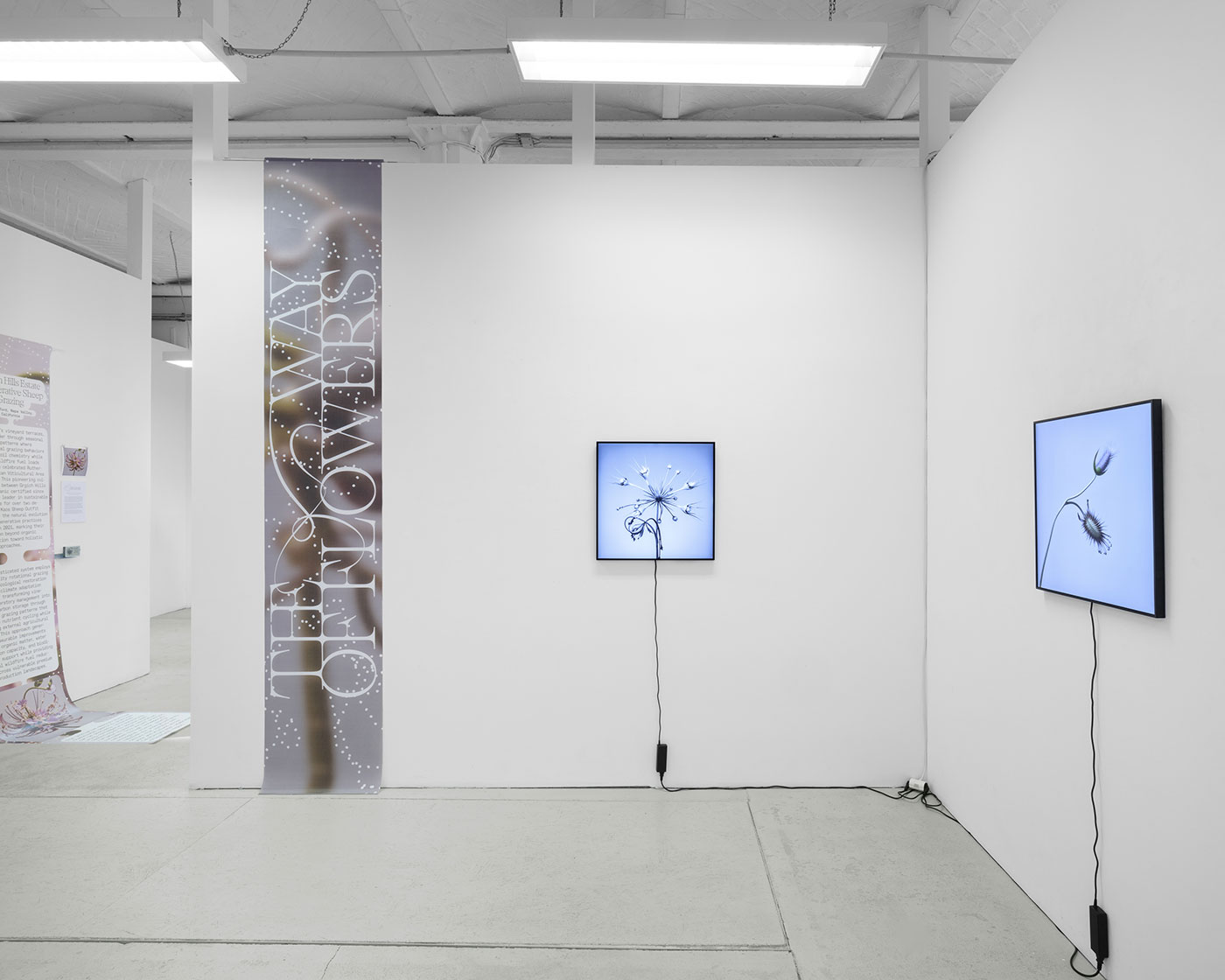
Katharina Weinstock: In breaking with the idea of the artwork as an immaculate, timeless artifact, this project resonates with instruction-based conceptual art of the 1960s, whereby a single instruction allowed for various possible outcomes. How do you view the project historically and also as an example of contemporary generative art?
CROSSLUCID: We find ourselves drawn to something more ancient than the instruction-based conceptual art of the 1960s. Consider the seed: a compact set of parameters that unfolds into specific compositional variations depending on soil, climate, care, and chance encounters. There’s no predetermined form, only conditions for emergence.
Where Vera Molnar encoded fixed instructions for variable human execution, “The Way of Flowers” operates through nested protocols — instructions distributed across multiple scales that interact recursively.
We design the protocol: the morphological grammar governing how ecological data translates into botanical form; which conservation projects are available; how “TokenMemory” accumulates and how “Nutrients” flow and redistribute through this system. Within this, “Seed Stewards” compose their evolving digital botanical by selecting four conservation projects from a bespoke selection by Sarah Baxendell of ArtEcology. Each community contribution (the only permanent artwork) is a discrete instruction to “activate this conservation signature.” Yet the pattern of contributions creates emergent instructions that no single actor designs.

Traditional instruction-based art often treats time as a neutral medium for execution, whereas our system performs “morphological choreography”: human ecological decisions support specific bioregions; conservation types and species become choreographic notation; while the “Morphological Art Engine” (a bespoke machine-learning pipeline) doesn’t execute mechanically but interprets, generating synthetic intuitions with unpredictable aesthetic outcomes. What André Geremia Parise and Michael Marder call “extended plant cognition” — where the minimal unit of intelligence is plant + environment — becomes in our system artists + stewards + community + conservation projects + AI + temporal dynamics. Instruction emerges from their intra-action.
Perhaps the more radical claim is that instruction here is never fixed but constantly reconstituted. “TokenMemory” means that the system remembers every interaction, compounding them such that the hundredth donation triggers different anatomical possibilities than the tenth because the botanical has evolved. This is instruction as a living process rather than static command, mirroring plant growth itself — a continuous metamorphosis where the leaf is the ur-form that thickens into seed, refines into petal, and expands into fruit.
What interests us is not only preservation but provocation.
Consider the Paris Agreement, European Green Deal, and national biodiversity strategies. They all operate as instruction-based work — global blueprints for planetary care. Yet it is exactly the failure of their signatories to deliver palpable improvements on land that prompts us to try to create an incentive system to participate in collective planetary tending. As temperature records shatter year after year; as red lines drawn by scientists are crossed with impunity; and while oil extraction accelerates, we need to ask: what forms of action become possible when we can already see everything that’s broken?
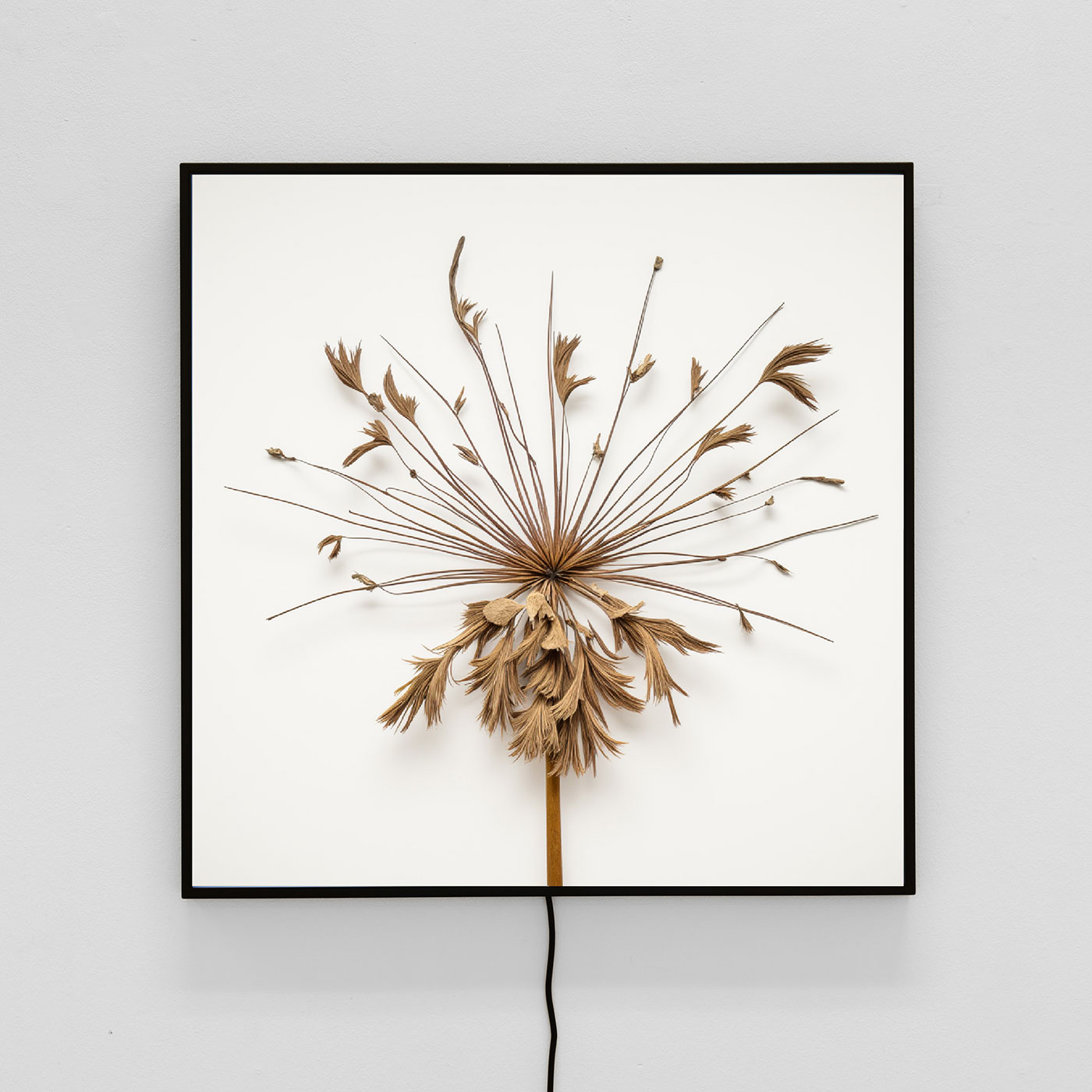
The artist Hans Haacke made legible systems of capital, power, and ecological destruction. But legibility hasn’t saved us.
The answer that we’re prototyping is not art that represents care, but art that is caring — that generates material consequences for living ecosystems while creating digital life that honors vegetal ways of being.
Here, the system itself is the artwork — not the individual botanicals (though they are beautiful), but the entire recursive ecology: human stewards selecting conservation projects; spirits curating and translating of ecological data; blockchain systems verifying authenticity; and conservation projects that contribute their unique ecological signatures. This is what we mean by “polyphonic worlding” — distributed agencies birthing beauty intertwined with real-world regeneration.
This is collaborative worlding at the edge of what instructions can generate — not commanding outcomes, but conditions in which unprecedented hybrids can emerge; where meaning manifests not in predetermined endpoints but in the ever-evolving middle, where all of us — human, computational, ecological — are learning to tend together.
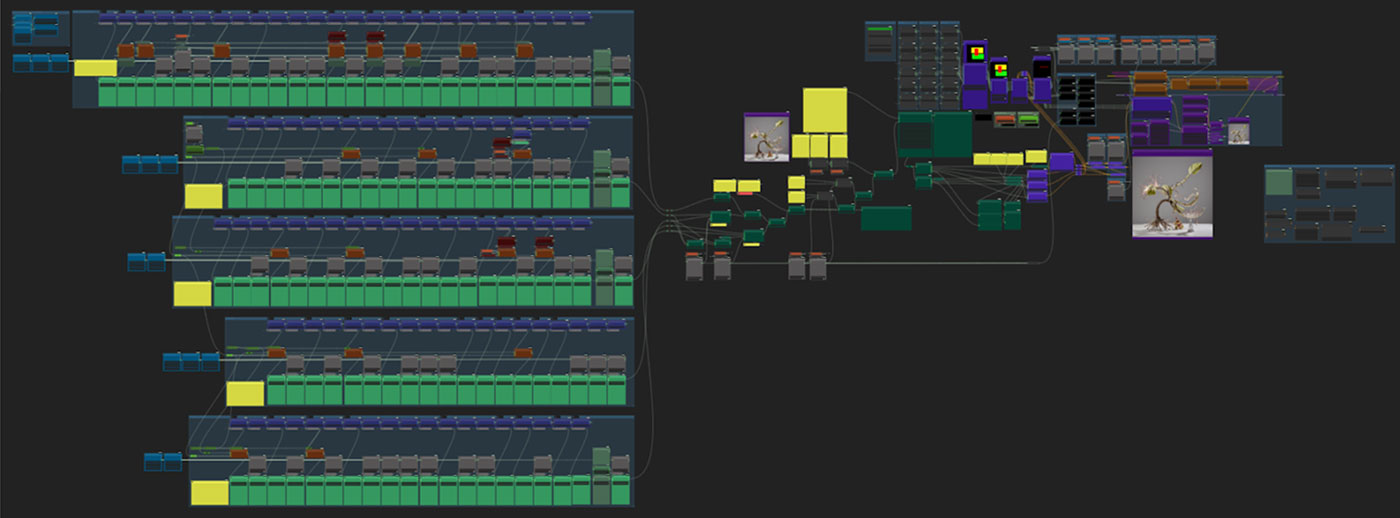
KW: The project seems to play on the financialization of art. Here, investment is connected to a metaphor of growth or evolution, which feels both critical and redemptive. What makes the blockchain and tokens useful media for conceptual or environmental projects such as this?
C: We use blockchain because it is programmable, participatory, and permits experimentation with value flows that conventional systems cannot accommodate. It is a good material for relational experiments. Conventional finance fails to calculate ecosystem labor — soil-building, oxygen production, and water filtration remain economically invisible. Blockchain’s permissionlessness creates space to prototype alternatives: smart contracts establishing long-term relationships mirroring ecological timeframes, collectively governed sovereign funds, and transparent redistribution.
We were inspired early on by Primavera De Filippi, who pointed to blockchain’s potential to encode governance models impossible within existing institutional frameworks. These aren’t theoretical models but live relational infrastructures that people can shape directly through their engagement.
“The Way of Flowers” positions conservation as essential infrastructure within borderless digital societies, prototyping an economic paradigm where care for natural systems is inherent in digital participation.
We’re building prefigurative tools to consider what value looks like when measured in biodiversity uplift and whether care can become programmable protocol operating at planetary scales.
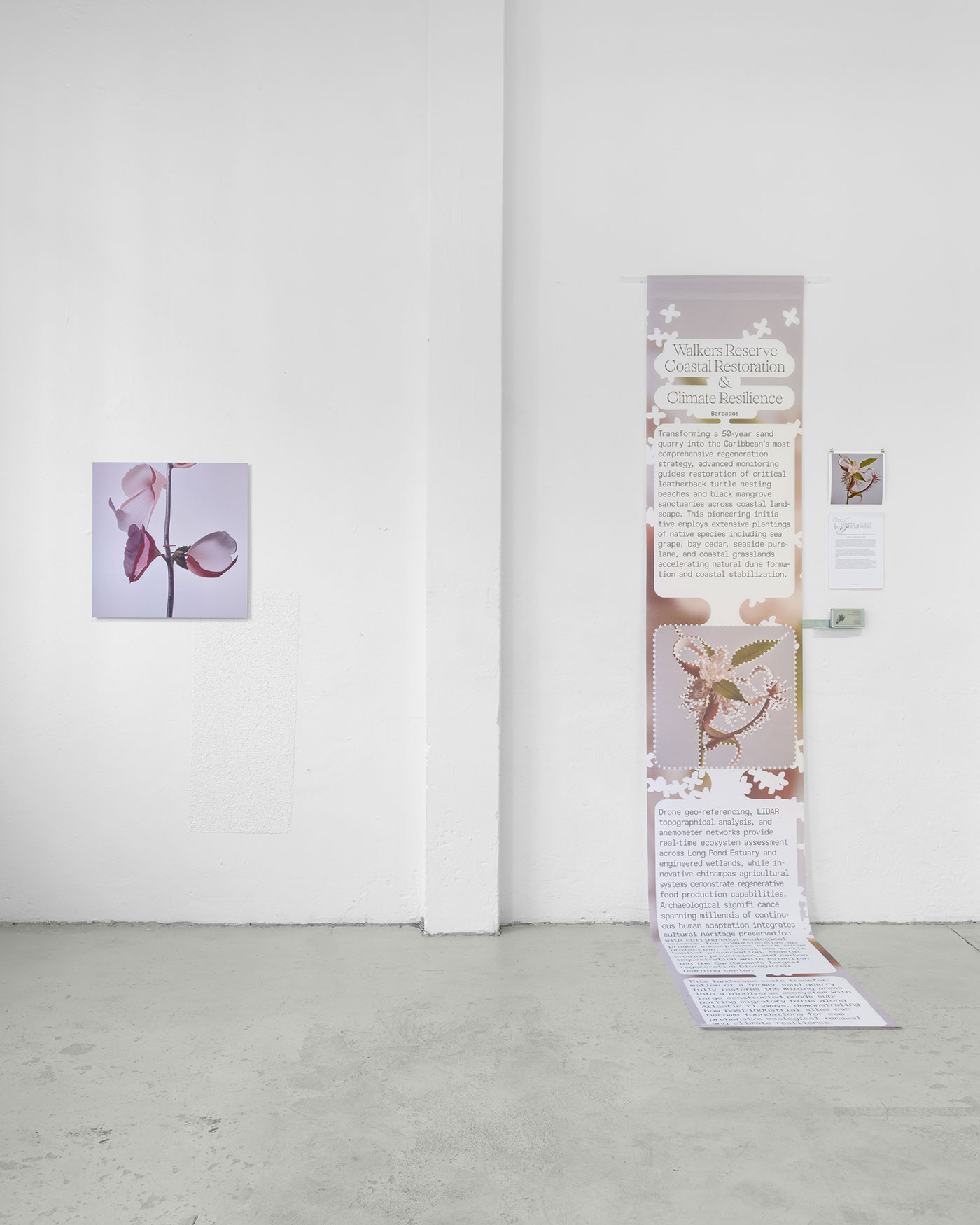
KW: Much has been written about the environmental footprint of generative AI. But what is the potential of the new technologies employed in this project for ecological stewardship?
C: The paradox at the heart of this work is its use of computation to reconnect us with the environment.
The question is not whether AI’s environmental footprint is real (it is) but whether its capacity to reorganize human attention, economic flows, and collective action toward ecological outcomes can justify and eventually transform that consumption.
The deeper inquiry concerns not efficiency but epistemology — whether computation can help us to recognize and transform the underlying patterns of extraction that have created environmental crises, or whether it merely replicates those logics at a different scale.
The immediate capabilities suggest possibility. Distributed verification creates tamper-proof records of ecological interventions that might otherwise remain invisible to coordinated action. While smart contracts developed by Adriano Guerrera enable cross-boundary coordination, allowing collective tending across jurisdictional lines that typically fragment ecological stewardship. “Seed Stewards” — whether individual collectors, groups or institutions — become nodes in networks that can coordinate resources and attention across vast distances while remaining rooted in specific bioregions.
Our project tests whether blockchain’s infrastructural logic — transparent, persistent, collective — may be repurposed from speculation toward care. Here, digital interfaces become “wayfinding tools”, urging us to navigate back to reciprocal relationships with living systems. The technology doesn’t abstract from ecology but renders its hidden dependencies legible, creating feedback loops between aesthetic attention and material consequence.
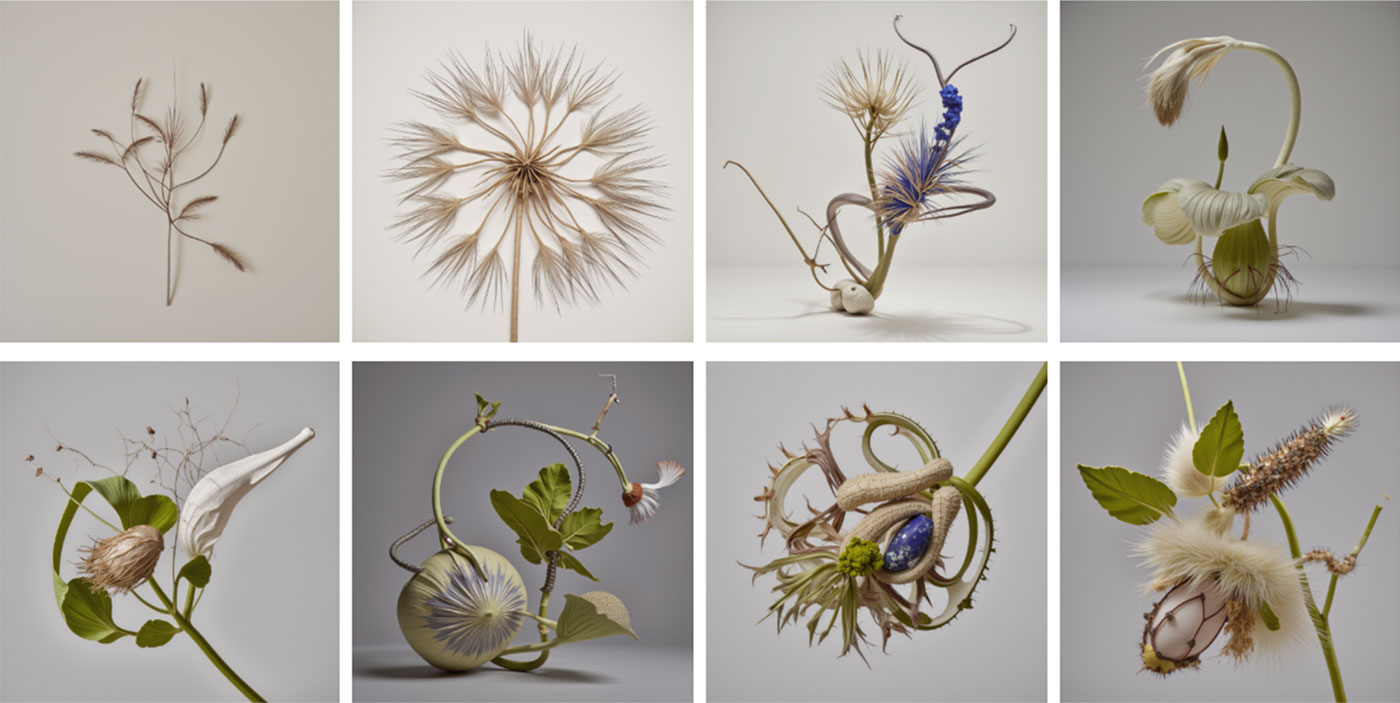
KW: The aesthetics of the project, which includes close-ups of plants against neutral backgrounds, recalls scientific documentations of plant specimens throughout history. (The earliest herbaria, which date back to the 1540s, are associated with Luca Ghini and his botanical teachings in northern Italy.) Today, the world’s herbaria are documenting biodiversity loss. What prompted you to want to generate “fictional” flora?
C: The origins of “The Way of Flowers” lie in exploring evolutionary possibilities at the threshold between documentation and speculation. The first outcomes of the project, which we call “the substrate” — presented as prints in the gallery — began by navigating latent spaces through semantic scheduling techniques, focusing on extinct species whose evolutionary trajectories had been permanently truncated. What excited us was the Botanical Latin nomenclature and how names allow us to target where we land in latent space while exploring the spectrums between meanings.
Through this multilayered process we deepened our understanding of plant morphology through the vocabulary of granular textures, tactile materialities, fantasy xeno-elements, and nuanced mineral compositions, returning to botanical specificity to trace how semantic structures navigate generative systems by mapping both their capacities and breaking points.
Traditional herbaria freeze specimens at a single point in time in the past. Our “Seeds” draw from multiple biological repositories: the native plants of their locality (currently Berlin and Brandenburg), compositional forms and structures, and the native flora associated with biodiversity projects selected by both “Seed Stewards” and, subsequently, the participating community. This creates not “fiction” but morphological anticipations: forms that could arise — or remind us of those already present — through sustained ecological care across deep time. These aren’t preserved specimens but living propositions, oriented toward what care might grow.

KW: Today, activism can take the form of speculative fiction — I’m thinking of Daisy Hildyard’s The Second Body, Ana Tsing’s The Mushroom at the End of the World (2015), and Susana Pilar Delahante Matienso’s “Achievement”. Your show is accompanied by a short work of speculative fiction by Chen Qiufan. How do you reflect on this text and the power of speculative fiction at a time when the future of the planet is at stake and we need to act collectively?
C: We’re drawn to speculative fiction not as representation but as enactment, creating conditions for different relational patterns rather than merely depicting alternative worlds. Ursula K. Le Guin understood this deeply. Her novel, The Dispossessed (1974), doesn’t simply describe an anarchist society; it creates the linguistic and conceptual infrastructure through which such a society becomes thinkable, fostering the conditions whereby mutual aid might be imagined as foundational rather than utopian.
We had the privilege of creating the first AI video for Le Guin’s story, Vaster than Empires and More Slow (1971), in collaboration with Berggruen Institute — a work that operates as perceptual recalibration, teaching us to sense differently. The story performs what it means to be transformed by vegetal consciousness, to become responsive to rhythms and relationships that operate outside human temporality.
Chen Qiufan’s poetic text for our exhibition at Office Impart, We are the soil for what comes next, operates similarly, offering not metaphor but methodology: a way of understanding ourselves as substrates for sustaining other life. The text presents what already exists beneath the conventional perception: the interconnected relational networks, the metabolic exchanges between species, the ways we are always already embedded in the biosphere. This shift is not separate from collective action but foundational to it.
What makes speculative fiction powerful at this moment is that it becomes a necessary component of reality-making, establishing the conditions through which we recognize and act within ecological entanglement.
Activism here takes the form of intentional worlding: the slow, patient work of creating new relational infrastructures that make different futures imaginable, and therefore possible.
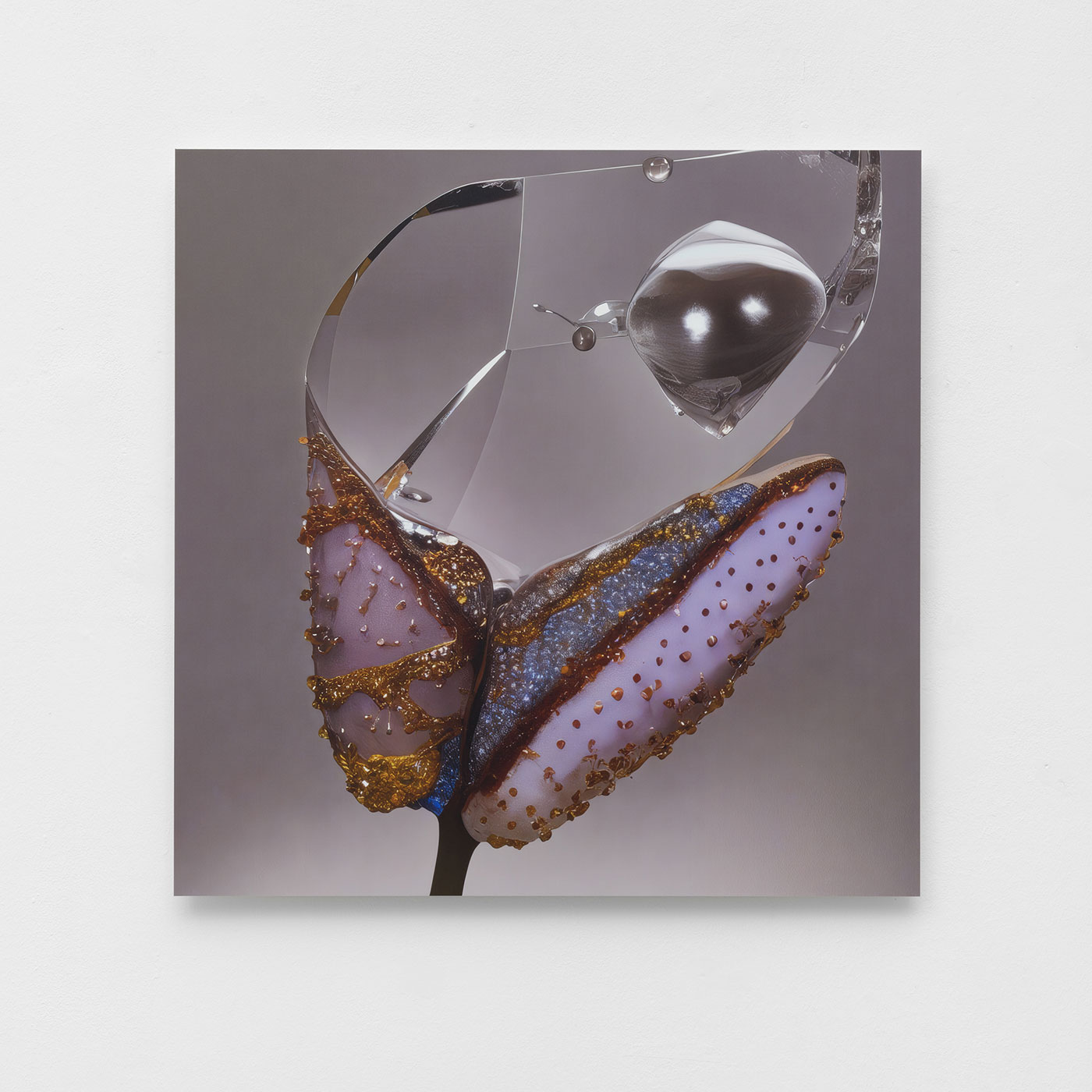
KW: Your project taps playfully into the pleasure of cultivation and watching something grow. This impulse has long been exploited by the video game industry, where users are rewarded in a way — and at a speed — that has nothing to do with the real-world labor of care, which is slow and often subject to setbacks. You are repurposing play for the regeneration of real-world ecosystems. But in order for the projects with which you are concerned to be sustainable, they need a steady flow of income. For how long and to what extent can “The Way of Flowers” realistically supplement such projects?
C: The distinction here is crucial. Unlike game mechanics that simulate care without consequences, “The Way of Flowers” creates verifiable links between digital engagement and tangible conservation, operating across multiple temporal layers. Leading on from our engagement with the concept and model of Partial Common Ownership (PCO) nurtured by RadicalXChange, every “Snapshot” purchase initiates a multidirectional flow, with half the sum directed to verified regenerative projects and the remainder distributed across the ecosystem — referral networks, Seed growth, and the “Creator Circle”.
After the initial vesting period, “Seed Stewards” can: continue stewardship with capital remaining committed; claim their full investment and revenue through withdrawal, ending the Seed’s evolution; transfer their position to a new Steward through secondary market sale; or choose the Bespoke Artistic Video pathway — documenting the Seed’s complete evolution from first Snapshot to last — in place of monetary revenue. This final option transforms their entire Nutrient Reserve into “Sovereign Reserves” — capital that becomes permanently locked, generating perpetual yield for biodiversity that is independent of institutional priorities or market pressures.
The project demonstrates that patient capital, collective governance, and transparent verification can forge new relationships between economic and ecological systems — where cultivation pleasure becomes inseparable from regenerative work, and care compounds into both aesthetic beauty and measurable environmental impact.

For those drawn to participate in this becoming, engagement begins here:
Potential “Seed Stewards” (institutions or collectors) should contact us through Office Impart. Together, we determine vesting commitments and select four conservation projects from eight initiatives across six bio-regions — these form your Seed’s DNA. Your Seed exists as a dynamic evolving botanical, continuously transforming as your community contributes. Optional blooming screens display real-time transformations.
You activate your audience for collective ecological action.
“Community Contributors” connect to your wallet in the dApp (decentralized app), select any existing Seed and donate to its biodiversity projects. Each contribution triggers visible structural changes and generates a Snapshot — an artwork serving as a memory token of the evolution at that precise moment. You support actual ecosystem restoration while your care becomes visible and permanently inscribed. You are welcome to come back any time and tend the garden.
CROSSLUCID is an artist collective that engages in highly collaborative cross-disciplinary projects in co-evolution with technology. Their work and research converges around the exploration of the self as a network; intimacy and the potential for pleasurable actualization through the digital sphere; and the reimagination of our alliances with technology seen as part of a sympoietic biosphere and universal post-material consciousness. Through explorations spanning film-making, poetic artificial intelligence, multi-layered techniques of collage, assemblage and experience-led interventions they create scenarios and build experiential formats that instigate prototyping and rehearsing potential futures and progressing metamodern values.
Their work has been exhibited globally, including at The Window, CHANEL HQ, London; MetaCity at Shanghai Architecture Biennale; HeK, Basel; Vellum LA; EPOCH Gallery; Osaka City Museum of Fine Arts; Francisco Carolinum Linz; iMAL, Sint-Jans-Molenbeek; Expanded.Art; Art Encounters Biennial, Timișoara; MuseumsQuartier and Belvedere 21, Vienna; arebyte, London; Chronus Art Center, Shanghai; FMAV, Modena; AI Biennale, Essen; Office Impart, Berlin; The Wrong Biennale; Garage Rotterdam; HOFA, London; Art Basel Miami Beach.
Katharina Weinstock is an art historian and media theorist with a focus on modern and contemporary art, and digital culture.
CROSSLUCID, “The Way of Flowers”, runs to October 17 at Office Impart, Berlin.

